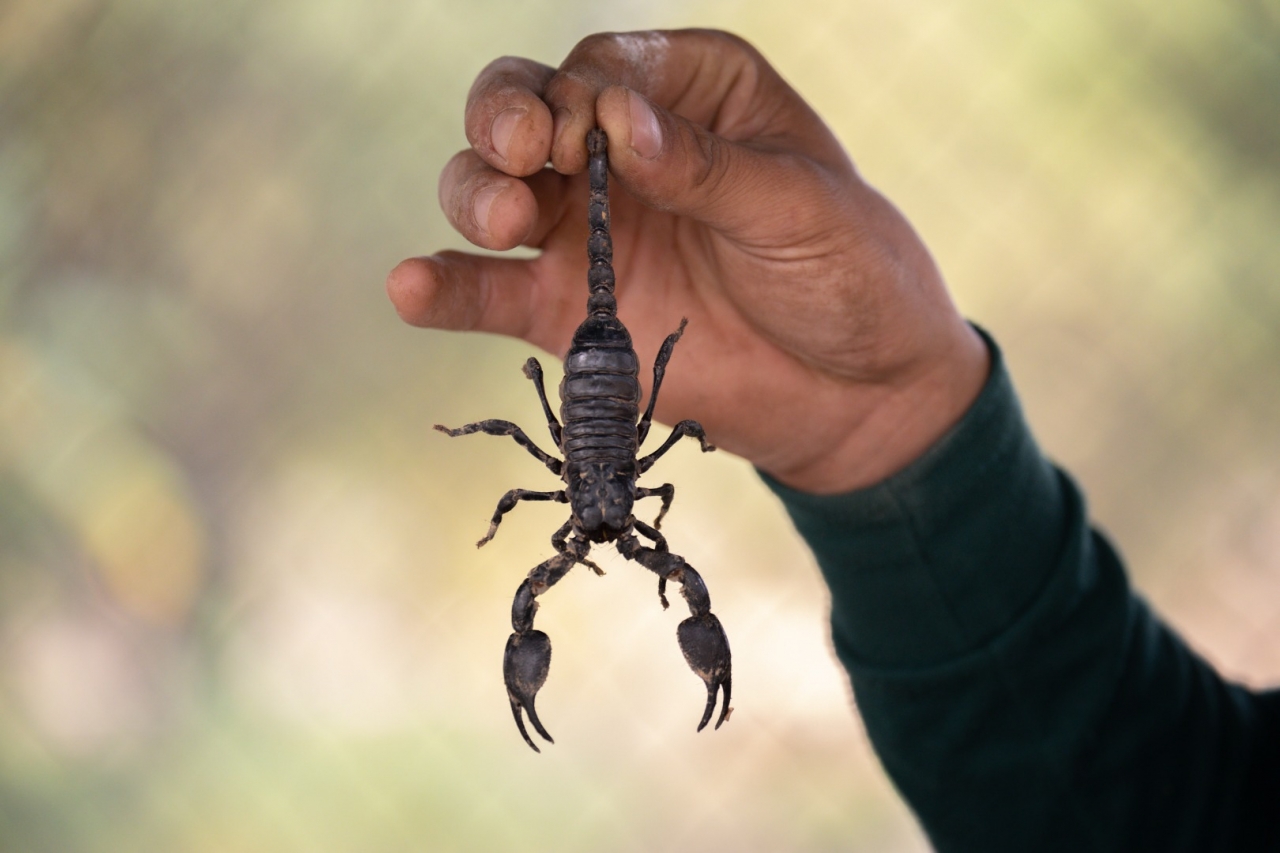You don’t see them often, and in fact, I have only ever encountered three – the first was under a rock in my somewhat wild garden at the time, and I wasn’t sure if the beastie was alive – until a poke with a stick brought his tail up in a flash to let me know he was very much alive and wasn’t to be messed with!
There are around 2,000 different types of scorpion - not all in Portugal thankfully - and are collectively called arthropods and are closely related to spiders, mites and ticks. They have mouthparts called chelicerae (jaws), a pair of pedipalps (pinchers), and four pairs of legs. The stinger is called a telson, and the needle part of the telson is similar to a hypodermic needle. The scorpion can regulate how much venom is injected, which contains a complex mix of toxins that affect the nervous system. But the good news is that out of the 2,000 only 30-40 can cause fatalities, and none of them live in Portugal! Also reassuring is the fact that the venom of most scorpions is only potent enough to kill the small insects or animals that they feed on.
They average in size at around 2½ inches, and range in colour from a beigy yellow to black, red or brown, all providing camouflage. It also has tiny pincers at the head end which aren’t venomous, but are to restrain the scorpion’s prey while the tail does the business! A scorpion is quite distinctive in appearance, with a segmented tail curving forward towards its head. They are solitary creatures, so it’s unlikely you will get an invasion of them.
It can be tricky to determine whether a scorpion is male or female. Baby scorpions are known as scorplings (now there’s a good Pub quiz question!), and the female scorpions carry them (25-35 of them!) on her back for their first 2 weeks, so if you see babies then it is certainly a female. The female doesn’t lay eggs but gives birth to live scorpions, and when they are born, baby scorpions have a very soft outside shell, or exoskeleton. Sometimes when the mother scorpion cannot find enough to eat, she will eat her own babies, but luckily for them, this is only a last resort!
Scorpions typically eat insects, but their diet can be extremely variable—another key to their survival in so many harsh locales. When food is scarce, the scorpion has an amazing ability to slow its metabolism to as little as one-third the typical rate for arthropods.
This technique enables some species to use little oxygen and live on as little as a single insect per year. Yet even with lowered metabolism, the scorpion has the ability to spring quickly to the hunt when the opportunity presents itself—a gift that many hibernating species lack.
These hardy, adaptable arthropods have been around for hundreds of millions of years, and they are nothing if not survivors. Such survival skills allow scorpions to live in some of the planet’s toughest environments. I found out that researchers have even frozen scorpions overnight, only to put them in the sun the next day and watch them thaw out and walk away. But there is one thing scorpions have a difficult time living without—soil. They are burrowing animals, so in areas of permafrost or heavy grasses, where loose soil is not available, scorpions may not be able to survive.
Scorpions, with their powerful stingers, appear in art, folklore, mythology, and commercial brands. Scorpion motifs are woven into kilim carpets for protection from their sting. Scorpius is the name of a constellation; the corresponding astrological sign is Scorpio. A classical myth about Scorpius tells how the giant scorpion and its enemy Orion became constellations on opposite sides of the sky.
And one final cool fact - most scorpions glow a blue-green colour when illuminated by ultraviolet light or natural moonlight. Scientists aren’t sure how this fluorescence benefits the creatures, but some have speculated that it acts as a sunscreen - or helps them find mates in the dark. For humans, one benefit of the scorpion’s glow is that it makes these stingers easier to see in the dark. Which is perfect, whether you’re trying to study them … or avoid them!
Marilyn writes regularly for The Portugal News, and has lived in the Algarve for some years. A dog-lover, she has lived in Ireland, UK, Bermuda and the Isle of Man.











